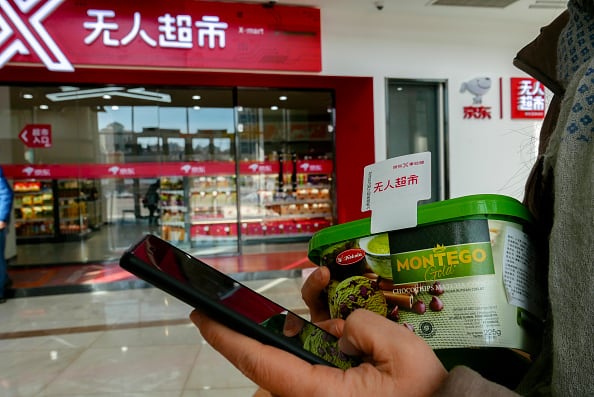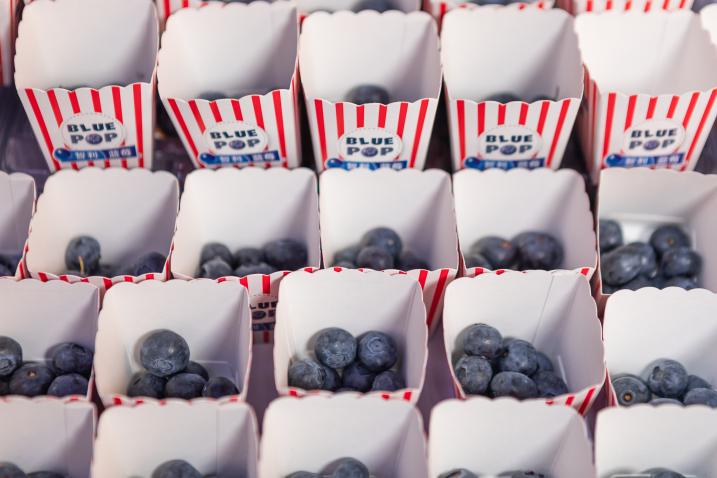Earlier this year, the Chilean Blueberry Committee and fruit export trade association, Asoex, developed a marketing campaign to promote Chilean blueberries as the new cinema snack.
‘Blue pop’ was rolled out in Shanghai cinemas and promoted as a healthy alternative to popcorn, which can be high in salt, sugar and fat.
“Chilean blueberries are also a healthier alternative to other types of snack,” said Charif Christian Carvajal of Asoex. “They contain vitamin C, fiber, flavonoids, and other essential nutrients, and are naturally fat-free.”
As China’s middle class grows, so does its taste for foreign food. Latin America, as a major global agri-food exporting region, is well-placed to meet this demand and blueberry growers are not the only beneficiaries.
China is Chile’s biggest destination for exports. Between 2017 and 2018, agri-food exports increased from US$1,596.45 to US$2,374.81 - a 49% rise. (The top-performing products were wine, grapes, cherries, apples, blueberries, and frozen pork, respectively.)
China is also keen to ensure it has stable supplies of Latin American produce for its consumers.
“Cherries [have become] very popular among Chinese consumers. In fact, we have seen many Chinese investors coming to Chile to buy cherry farms in order to export to China,” Cristian Sagal, investment promotion officer at Invest Chile, told FoodNavigator-LATAM.
'E-commerce is the future'

E-commerce plays an important role in Chinese consumers’ access to Latin American food and drink.
According to IGD figures, China’s online grocery market was estimated at $51 billion in 2018 and is expected to reach US$196.3bn in the next five years.
"[China has] a rising population of young, middle-class shoppers leading busier lives," said Shirley Zhu, Asia program director at the Institute of Grocery Distribution (IGD),. "In turn, this is creating an aspirational class of shoppers who want access to grocery products at the click of a button, and who are also increasingly looking to source international goods."
Sagal confirmed this: “Most of the commerce is done online; this is the future for Chilean/Chinese exporters and importers."
A reputation for quality
China has had Latin American food exporters are keen to present the region as having high food safety standards - a strong selling-point in a country racked by food safety scandals in recent years, from gutter oil to melamine in infant formula.
According to Sagal, Chinese consumers see Chilean food as being high quality.
Shanghai resident Li Shasha told He Mu, a food and agriculture investment professional covering China and Latin America, in Americas Quarterly: “It’s great to be able to buy fresh products from Argentina and Chile, and have them almost immediately, wherever I want,” adding that Latin American products “are well known for their high quality, which is my main concern when shopping for food”.
Brazil beefs up investment for China
Argentina and Uruguay are also playing an important role in the agriculture trade with the Asian country. Earlier this year, the Argentinian government celebrated the Chinese government’s decision to reduce tariffs on products from certain countries, a move that benefited Argentinian prawns, cheese, whey, blueberries, and pet food.
However, this is on a "much smaller scale" compared to Brazil, said Dovile Misiunaite, analyst at market research company Euromonitor.
China is the main destination for Brazil’s agri-food exports, with around 53% of Brazil’s total exported agricultural production and 30% of meat and meat products going to China, according to Euromonitor.
Increased Chinese demand for beef is partly down to increased consumer wealth and a shift towards Western-style diets where meat features more prominently.
“A good example of Brazilian optimism towards trade with China is JBS, the Brazilian meat-producing giant. Based on expected demand growth for imported meat in China, the company announced a R$45 million investment into production expansion, as the company is registering major exports volume growth.”
With a population of almost 1.4 billion in 2017, China’s size is what is most attractive to any business.
According to Misiunaite, this size is a barrier to entry for some countries – meaning more opportunities for big Latin American producers.
“In the case of soybeans, for instance, [China’s] need for large-scale imports narrows the possible supplier list. If trade wars with the US is to continue disrupting sales between these two countries, Brazil and Argentina are the two suppliers with similar production levels to replace the US.”



